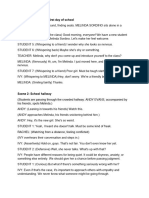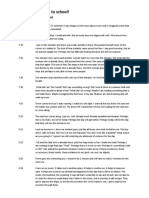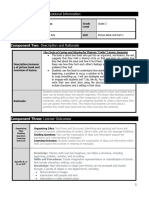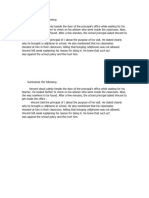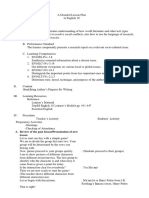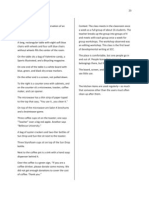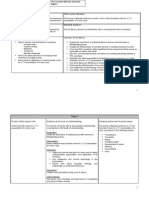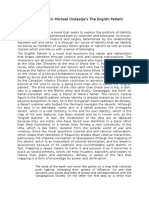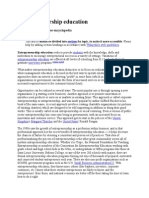VAL-ED GLOBAL SHORT FILM COMPETITION 2025
Duration: 6 – 8 minutes (beyond 08:30 will be disqualified)
Submission is 11th August, 11:59 PM via Entry Form.
Costumes:
Affordable & Innovative Prop Ideas
● Judge’s bench using school desks + black cloth
● DIY robes from black dupattas or shawls
● Paper gavel from cardboard tubes
● Courtroom signboards: “Witness”, “Judge”, “Public”
● Constitution book created from printed covers
● Chalkboard showing trial number, article codes
● Use of symbols: Lady Justice, tricolor, torches, chains, blindfolds.
Participant Checklist:
Original script on a Right or Duty
Courtroom characters included
Storyline with flashback, arguments, and resolution
English subtitles
Film Poster (optional but encouraged)
40-sec “Meet the Characters” reel (optional)
YouTube link of the film submitted
Optional reflection paragraph: “Why we chose this case”
Judging Criteria (Total 10 Marks) Criterion Max Marks
Relevance to Theme & Constitutional Insight 3
Creativity & Originality in Courtroom Storytelling 3
Teamwork & collaboration (0-2) 2
Overall Impact (Performance, Visuals, Emotion) 2
Script
Title Screen
JUDGE (firm voice):
"Today, we gather in this courtroom to put on trial our collective failure to uphold the Fundamental
Right to Education Article 21A and the Right to Life with Dignity Article 21. Education is not just
about academics — it is about nurturing the mind and heart. These rights are not favors; they are the
foundation of every child’s growth and humanity."
1
�Today, we have gathered to put a very real and urgent matter on trial — the mental and emotional
well-being of our younger generation. For too long, their struggles have been minimized,
misunderstood or dismissed by those meant to support them — the parents, teachers and society at
large.
This trial asks a critical question: Have we, as adults, truly seen our children — not just as students or
achievers — but as whole, complex human beings deserving of understanding and care?
We will hear from both sides before reaching a thoughtful and fair conclusion.
PARENT LAWYER:
"Your Honor, these children are simply undisciplined and ungrateful. We give them everything —
money, education, the best opportunities. Everything they want, they receive."
STUDENT LAWYER (standing abruptly):
"Objection, Your Honor! The Constitution guarantees us the Right to Education, but education
without dignity and understanding is incomplete. Article 21A gives us the right to learn, but Article
21 gives us the right to live fully — with emotional well-being, respect, and care. Just because we
have things doesn’t mean we are heard or understood. We don’t want things. This is not rebellion —
this is pain. It’s the cry of children longing for understanding, for love."
JUDGE (considering):
"Objection sustained. The court acknowledges that material provision alone does not fulfill
emotional or constitutional needs."
FLASHBACK SCENE 1: THE INVISIBLE DAUGHTER
xyz showing her mother a sketchbook filled with detailed fashion designs.
xyz: "Mom, look! I finished the whole collection. I think I’d love to pursue a career in designing.
Her mother, who is on the phone scrolling through social media, barely looks up.
MOTHER: "That's nice. You're so creative. Did you finish your history essay? That's what really
matters."
xyz’s smile fades. She holds the sketchbook close to her chest.
xyz: "But... I'm really passionate about this."
MOTHER: "I'm passionate about you getting a good education and a stable career. Art is a fun hobby,
but let's be realistic.
mother leaves the room. Xyz drops the sketchbook on the ground, its pages falling open to reveal
the beautiful, unappreciated work.
FLASHBACK 2: CLASSROOM SCENE – THE UNSEEN STRUGGLE
SETTING: A sterile, quiet classroom. The teacher is at the front, writing on the board.
STUDENT (tentatively, voice barely audible): "teacher, I’m really trying, but this concept isn’t clear to
me. Could you please explain it again?"
TEACHER (exasperated, turns sharply): "Again? How many times do I have to repeat the same thing?
This is the foundation—if you can’t grasp this, you're just wasting your time and mine."
STUDENT (quietly, looking down at their desk): "I just want to understand... but I feel lost."
TEACHER (sharply, gesturing with a piece of chalk): "Lost? Maybe if you paid attention instead of
daydreaming, you wouldn’t be in this mess. This is basic knowledge. Everyone else understands—
2
�why can’t you?"
STUDENT (voice breaking, head still down, trying not to cry): "I'm not like everyone else. I need more
time... but I don't get it, no matter how hard I try."
TEACHER (turning away, dismissive): "I don’t have time to babysit. You're here to learn, not to ask for
favors. If you can’t keep up, maybe this isn’t the place for you."
(The student lowers their gaze, overwhelmed, as classmates either whisper quietly or avoid eye
contact. The classroom feels cold and heavy with the silence.)
CLASSROOM BULLYING SCENE – THE SILENT ATTACK
SETTING: A classroom, the hum of students working quietly.
(A student sits at their desk, looking anxious and focused. Another student, a bully, stealthily
approaches from behind, holding a small piece of paper.)
(Close-up on the paper: The word “DUMB” is scrawled in bold, messy letters.)
(The bully carefully sticks the paper to the back of the anxious student’s chair and retreats, smirking.)
(Nearby classmates glance over, some smirking, some looking uncomfortable but remaining silent.)
(The teacher calls out a question. The anxious student hesitates to answer, and whispers and soft
laughter ripple through the room.)
(Slowly, the bullied student turns, noticing the paper. Their face flushes with embarrassment and
hurt. The camera stays on their face as they carefully pull the paper off, crumpling it in their hand,
and turn back to their desk, defeated.)
FLASHBACK SCENE 3: THE EMPTY SCREEN
A dim, silent room. The only light: a phone screen.
A STUDENT (17) sits on their bed, back against the wall, knees pulled up. They scroll endlessly
through social media — smiling faces, friends at parties, awards, achievements.
Their expression stays blank. Every picture feels like a reminder of what they aren’t.
The glow of the screen reflects on their distant eyes.
They stop scrolling. Pause.
A long breath.
They open a chat app — a plain interface. A cold, digital substitute for human connection.
CHATBOT:
Hello. How can I help you today?
The STUDENT hesitates, then types slowly.
STUDENT (typing):
Why am I so lonely? I’m in a room full of people every day, but I feel completely alone.
CHATBOT:
Feeling lonely in a crowd can be a complex experience. It’s often related to a lack of meaningful
connection rather than a lack of people.
The STUDENT stares. Unmoved. Their fingers move again, faster this time — desperation creeping in.
STUDENT (typing):
Why don’t my parents, my teachers… anyone… understand me? They only see what I do, not who I
am. They see my grades, my projects, but they don’t see that I’m hurting.
CHATBOT:
The gap between what a person presents to the world and what they feel internally can lead to a
3
�sense of being misunderstood. Communication and empathy are key components to bridging this
gap.
A single tear rolls down the STUDENT’s cheek.
The response feels empty — clinical words for a human wound.
They close the app. The screen goes black.
Darkness swallows the room. Only silence remains.
Scene Sequence: Student Leaves → Symbolic Tree Scene
INT. STUDENT’S BEDROOM – NIGHT
1. Student types last message to chatbot, then stares at the cold screen.
A silent, heavy pause.
2. Student slowly closes the laptop (screen fades to black or dims slightly).
3. Student stands up and walks away from the desk toward the door, leaving the room.
4. Cut to EXT. NATURE / GARDEN / SMALL PLANT POTTED IN SOIL (symbolic setting)
o A tiny seedling struggles to grow in a cracked pot or limited space.
o The camera slowly zooms in on the fragile stem pushing upward toward light.
A child is a seed with the potential to grow into a strong, beautiful tree.
But as a society, with judgments and expectations, we keep that seed trapped in a small space.
We cut the branches before they can reach the sky.
Instead of sunshine and care, we give walls and cages.
And then we wonder why the child doesn’t grow fully — why they only seem to exist, not truly live.
WITNESS TESTIMONY – STUDENT:
"Your Honor… when I told my mom I wanted to study design, she laughed. She said art was just a
hobby. That’s all she saw — a hobby. Not me.
In class, I try to ask for help, but my teacher says, ‘Everyone else understands — why can’t you?’ So I
stop asking.
At home, I’m told to stay inside and study while I watch other kids play football.
Online, I scroll through pictures of smiling people, and I wonder… why can’t I feel like that?
Everyone says they want me to succeed, but no one asks me if I’m okay.
I don’t want more things. I don’t want more rules. I just want someone to really see me… and not
only my grades."
WITNESS TESTIMONY – TEACHER:
"Your Honor, we have 60 students in a class. We can’t give individual attention. If they don’t keep up,
it’s their fault. In our time, we didn’t complain — we worked harder. Why can’t they?"
STUDENT LAWYER (counters): "Because times have changed. Problems have changed. And your
methods haven’t."
WITNESS TESTIMONY – PSYCHOLOGIST:
4
�"Children today are not weaker — they are more burdened. Their Right to Education and Right to
Life with Dignity mean more than school admission or exam results — they mean creating
environments where children feel safe, heard, and valued. Loneliness, comparison, and constant
pressure are leading to unprecedented levels of anxiety and depression. They don’t need harsher
rules. They need connection, understanding, and space to grow."
PARENT LAWYER:
"Your Honor, these children call it pain. But we call it preparation.
We push them because the world is competitive.
We give them the best schools, the best coaching, the best opportunities. Isn’t that love?
We compare them not to hurt them, but to motivate them. We want them to succeed where we
could not.
This is not neglect. This is care — tough care."
STUDENT LAWYER:
You give us schools, but no time. You give us gadgets, but no conversations.
You compare us to others until we lose sight of who we are.
You teach us to chase marks, but not meaning. You silence our questions, then call us uncurious. You
want us to be perfect, but never ask what it's costing us inside. And when we finally break, you
wonder what went wrong — but you never listen long enough to hear the answer.
PARENT LAWYER:
"So you want freedom without responsibility? You want life to be easy?"
STUDENT LAWYER (firm):
"No, Your Honor. We don’t want life to be easy. We want life to be real.
We want our struggles to be seen, not dismissed.
We want help, not judgment. We want guidance, not control.
This is not rebellion — this is a plea to be heard."
JUDGE’S MONOLOGUE / VERDICT (Revised with Call-to-Action):
"This court sees no villains here — only generations failing to understand one another.
Parents, teachers, elders — you gave these children everything you thought they needed.
But in doing so, you forgot the one thing they needed most: to be seen as humans with dignity and
as individuals with dreams.
5
�The Right to Education (Article 21A) and the Right to Life with Dignity (Article 21) are not about
filling young minds with facts — they are about creating spaces where children can learn, express,
and grow as whole human beings.
This is not a verdict of guilt. This is a call to action.
Let us not raise achievers at the cost of raising human beings.
Let us not prepare them only for survival — but for life.
Replace comparison with compassion. Replace control with connection. Replace silence with
dialogue.
Justice begins not in these four walls, but in every classroom, every home, every conversation."
CLOSING SHOT
[Fade out with text on screen:]
"Mental health is not a luxury. It is a right. Education with dignity is not a privilege. It is the law."
REFLECTION PARAGRAPH (not to be included):
We chose to put the Right to Education (Article 21A) and the Right to Life with Dignity (Article 21)
on trial because these rights go beyond classrooms and textbooks — they are about creating safe,
nurturing spaces where children can learn without fear, comparison, or emotional neglect. Our story
reflects how children are often seen as achievers rather than individuals with feelings and dreams.
Through this film, we want to challenge parents, teachers, and society to go beyond material
provision and embrace justice, dignity, empathy, and connection. Education is not complete until it
uplifts the whole child — mind, heart, and soul.


